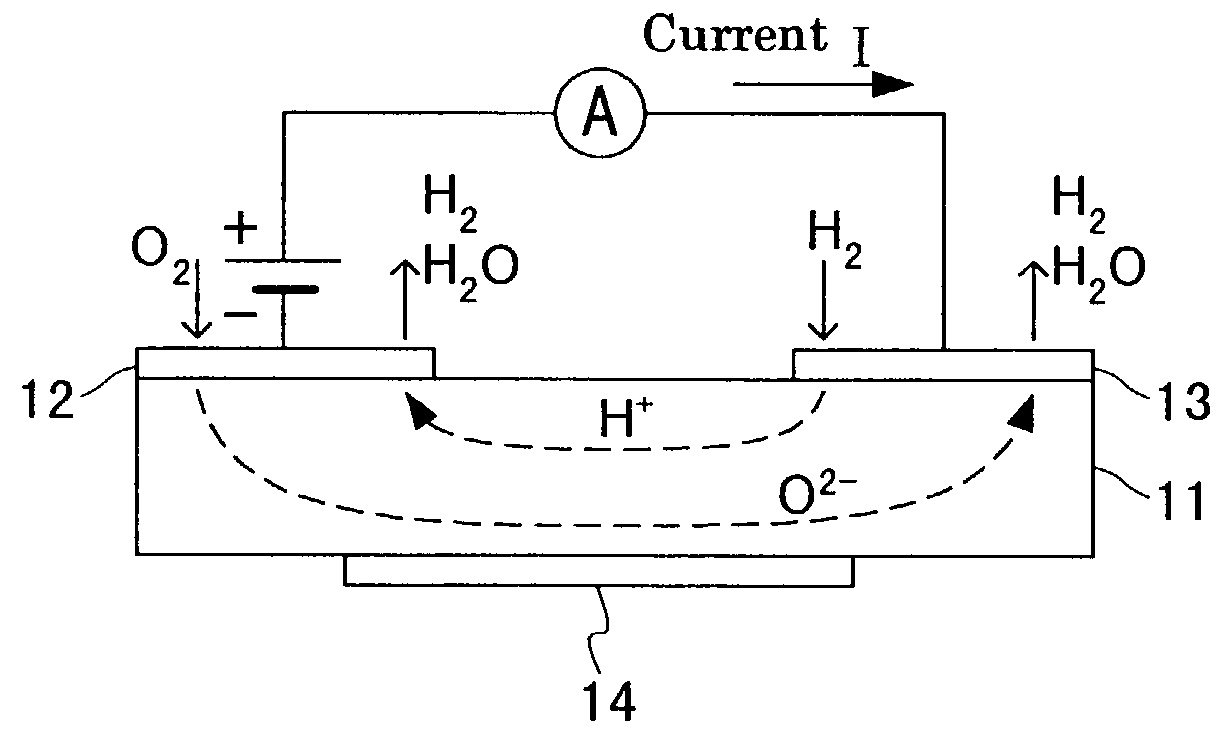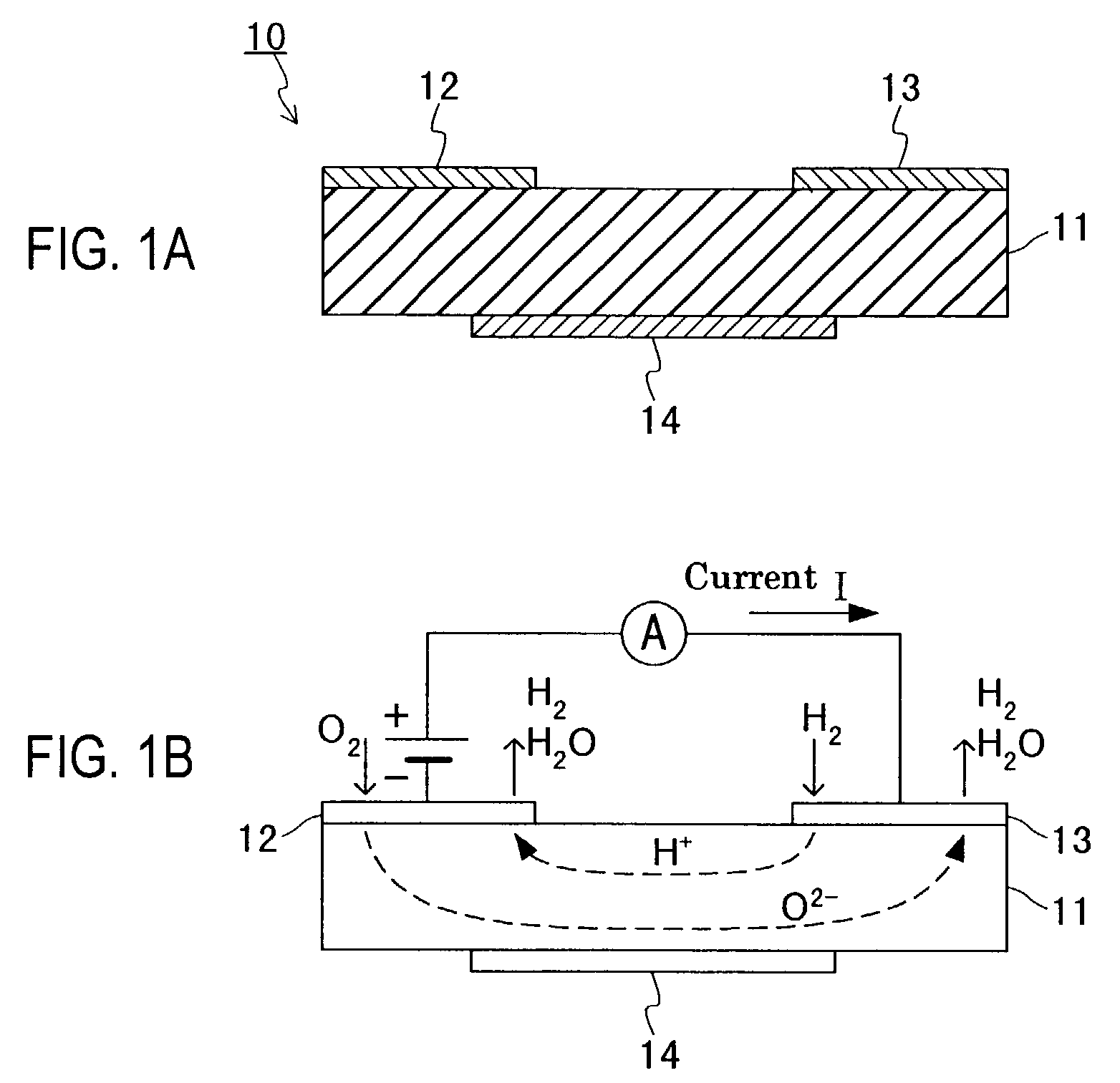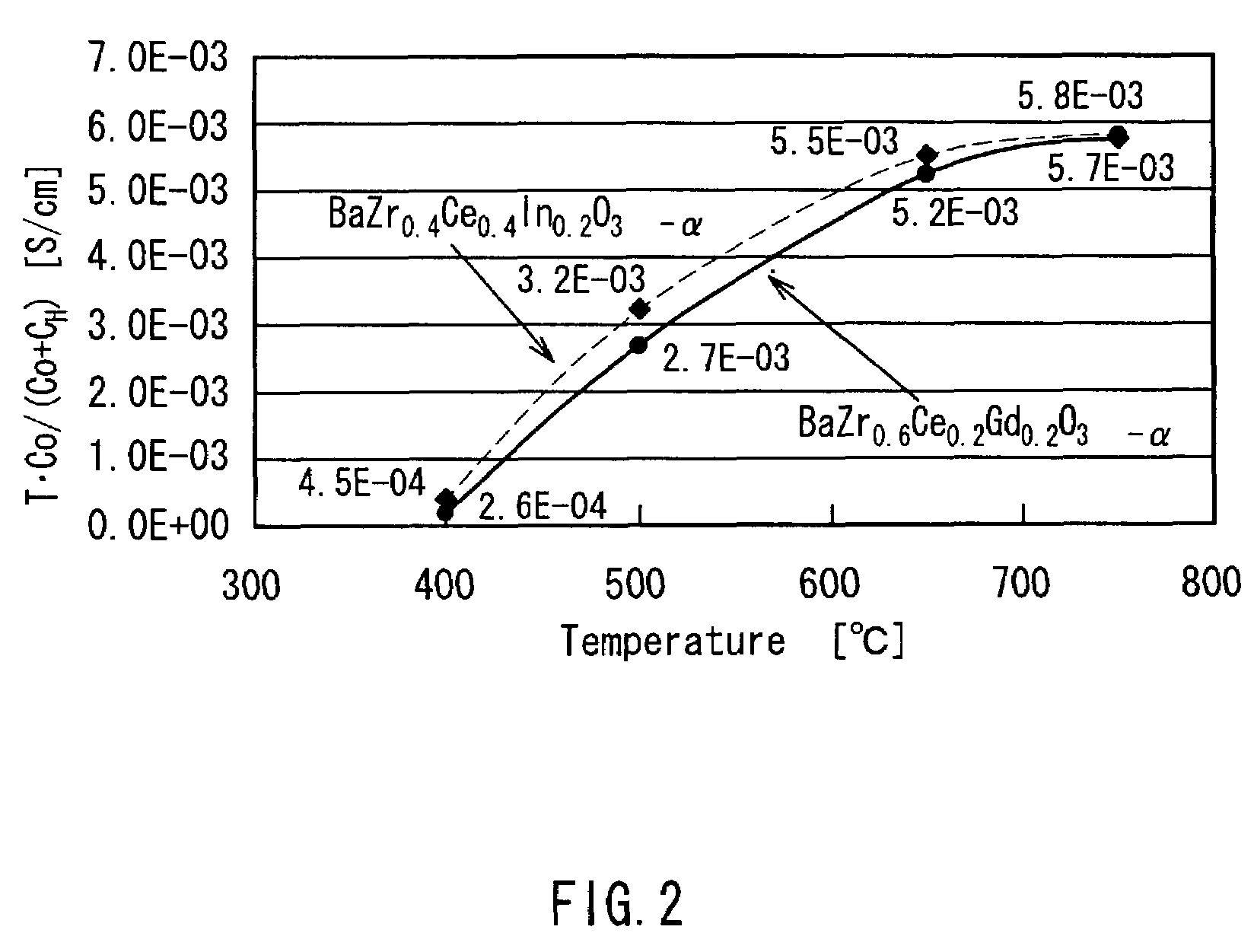Hydrogen sensor, hydrogen sensor device and method of detecting hydrogen concentration
a technology of hydrogen sensor and hydrogen concentration, applied in the field of hydrogen sensor, can solve the problems of not being developed, optical sensors are suitable for precise analysis, and the hydrogen selectivity of hydrogen sensors is not excellent, and achieves good hydrogen selectivity and responsiveness in detection, and high concentration region
- Summary
- Abstract
- Description
- Claims
- Application Information
AI Technical Summary
Benefits of technology
Problems solved by technology
Method used
Image
Examples
embodiment 1
[0048]FIG. 1A shows a cross-sectional view of the structure of a hydrogen sensor 10 of this embodiment, and FIG. 1B is a schematic view showing the operation operation thereof. A solid electrolyte 11 is made of an ion conductor that conducts protons (H+) and oxide ions (O2−). A first electrode 12 and a second electrode 13 are formed on the surface of the solid electrolyte 11 to conduct ions in the solid electrolyte 11, and a heater 14 for heating the solid electrolyte 11 is provided on the lower surface thereof The heater 14 can be made of sintered platinum that has been patterned, for example.
[0049]The hydrogen sensor 10 is a so-called a current detection type sensor, and a constant voltage is applied between the first electrode 12 and the second electrode 13 so that a current generated by the conduction of oxide ions flows steadily between the first electrode 12 and the second electrode 13, and a current generated by protons is added thereto, and a current value that has changed i...
embodiment 2
[0061]FIG. 5A shows a cross-sectional view of the structure of a hydrogen sensor 20 of this embodiment, and FIG. 5B is a schematic view showing the operation thereof A solid electrolyte 11 is made of an ion conductor that conducts protons (H+) and oxide ions (O2−). A first electrode 21 and a second electrode 22 are formed on the surface of the solid electrolyte 11 to conduct ions in the solid electrolyte 11, and a heater 14 for heating the solid electrolyte 11 is provided on the lower surface thereof. The heater 14 can be made of sintered platinum that has been patterned, for example.
[0062]The hydrogen sensor 20 is a so-called a current detection type sensor like the hydrogen sensor 10 in Embodiment 1. For the solid electrolyte 11, oxides containing barium and cerium, for example, barium-cerium oxides can be used, which is the same as the hydrogen sensor 10 in Embodiment 1.
[0063]The first electrode 21 is made of a material being capable of preventing oxygen from being ionized. More ...
embodiment 3
[0072]FIG. 7A shows a cross-sectional view of the structure of a hydrogen sensor 30 of this embodiment, and FIG. 7B is a schematic view showing the operation thereof. A solid electrolyte 11 is made of an ion conductor that conducts protons (H+) and oxide ions (O2−). A first electrode 31 and a second electrode 32 are formed on the surface of the solid electrolyte 11 to conduct ions in the solid electrolyte 11, and a heater 14 for heating the solid electrolyte 11 is provided on the lower surface thereof. The heater 14 can be made of sintered platinum that has been patterned, for example.
[0073]The hydrogen sensor 30 is a so-called electromotive force type sensor, and the electromotive force between the first electrode 31 and the second electrode 32 is measured to detect the hydrogen concentration of a gas to be measured. For the solid electrolyte 11, oxides containing barium and cerium, for example, barium-cerium oxides can be used, which is the same as the hydrogen sensors in Embodime...
PUM
| Property | Measurement | Unit |
|---|---|---|
| temperature | aaaaa | aaaaa |
| proton conductivity | aaaaa | aaaaa |
| temperature | aaaaa | aaaaa |
Abstract
Description
Claims
Application Information
 Login to View More
Login to View More - R&D
- Intellectual Property
- Life Sciences
- Materials
- Tech Scout
- Unparalleled Data Quality
- Higher Quality Content
- 60% Fewer Hallucinations
Browse by: Latest US Patents, China's latest patents, Technical Efficacy Thesaurus, Application Domain, Technology Topic, Popular Technical Reports.
© 2025 PatSnap. All rights reserved.Legal|Privacy policy|Modern Slavery Act Transparency Statement|Sitemap|About US| Contact US: help@patsnap.com



